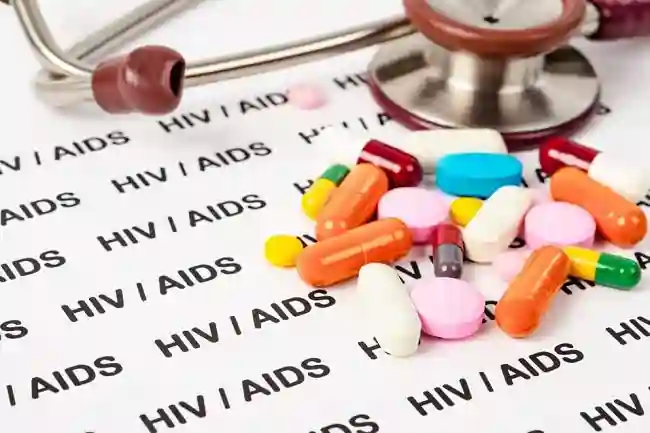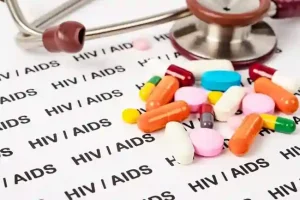Pengobatan AIDS Modern Dari Terapi ART hingga Harapan Vaksin

Perkembangan Terkini Pengobatan AIDS: Dari Terapi Efektif hingga Harapan Kesembuhan

ecomcovid19 – Meskipun sudah ada kemajuan besar dalam pengobatan, HIV/AIDS tetap menjadi isu kesehatan masyarakat yang signifikan di seluruh dunia. Oleh karena itu, penting bagi kita untuk memahami perkembangan terbarunya. Artikel ini akan membahas kondisi epidemiologi saat ini, berbagai jenis pengobatan AIDS modern,UNOGG hingga harapan di masa depan.
Epidemiologi Saat Ini
Menurut Organisasi Kesehatan Dunia (WHO), pada tahun 2023, ada sekitar 38 juta orang yang hidup dengan HIV secara global. Sayangnya, setiap tahun masih terjadi sekitar 1,7 juta infeksi baru. Selain itu, sekitar 690.000 orang meninggal karena penyakit terkait AIDS. Hingga kini, Sub-Sahara Afrika tetap menjadi wilayah yang paling terdampak.
Pengobatan AIDS Modern
Untungnya, dunia medis telah menemukan berbagai cara efektif untuk menangani HIV.UNOGG daftar Berikut adalah beberapa metode pengobatan modern yang menjadi andalan.
Terapi Antiretroviral (ART): Tulang Punggung Perawatan Terapi Antiretroviral (ART) adalah landasan utama dalam pengobatan HIV. Pada dasarnya, ART melibatkan kombinasi beberapa obat HIV yang diminum setiap hari. Para ahli merekomendasikan ART untuk semua orang dengan HIV.
Cara kerja ART adalah dengan mengurangi jumlah virus (viral load) dalam darah hingga ke tingkat yang tidak terdeteksi. Hal ini membantu mencegah perkembangan penyakit dan mengurangi risiko penularan. Hasilnya, individu dengan HIV dapat hidup lebih lama dan lebih sehat.
Biasanya, ART adalah kombinasi dari tiga atau lebih obat antiretroviral. Obat-obat ini berasal dari setidaknya dua kelas yang berbeda, seperti:
- NRTI (Nucleoside Reverse Transcriptase Inhibitors): Obat ini menghambat enzim reverse transcriptase agar HIV tidak bisa menggandakan diri.
- NNRTI (Non-Nucleoside Reverse Transcriptase Inhibitors):UNOGG Fungsinya mirip dengan NRTI, yaitu menghambat enzim yang sama.
- PI (Protease Inhibitors): Obat ini menghambat enzim protease, sehingga mencegah virus menjadi matang dan menular.
- Integrase Inhibitors: Menghalangi enzim integrase agar virus tidak bisa menyatukan materi genetiknya ke dalam DNA sel inang.
Terapi Gen: Pendekatan Mutakhir Selain ART, terapi gen mewakili pendekatan canggih dalam pengobatan HIV/AIDS. Teknik eksperimental ini melibatkan perubahan gen di dalam sel tubuh untuk menghentikan penyakit.
Dalam konteks HIV, terapi gen memiliki dua tujuan utama. Pertama, untuk memodifikasi sel kekebalan pasien agar kebal terhadap virus. Kedua, untuk menargetkan dan menghilangkan virus secara langsung dari tubuh. Salah satu riset yang menjanjikan adalah penggunaan teknologi CRISPR-Cas9 untuk mengedit gen sel T.
Studi Kasus: Kisah Sukses Pengobatan
John Doe, seorang pria berusia 35 tahun, didiagnosis HIV pada 2010. Setelah itu,UNOGG daftar ia segera memulai terapi ART. Viral load awalnya sangat tinggi, yaitu 500.000 kopi/mL. Namun, setelah enam bulan patuh minum obat, viral load-nya turun ke tingkat yang tidak terdeteksi. Selama dekade berikutnya, John terus melanjutkan pengobatannya. Kini, ia berhasil mempertahankan viral load yang tidak terdeteksi dan kualitas hidup yang baik. Kisah sukses John adalah bukti efektivitas ART.
Masa Depan Pengobatan HIV
Lalu, bagaimana masa depan pengobatan HIV? Para ilmuwan terus bekerja keras mencari solusi yang lebih permanen.
Potensi Vaksin Mengembangkan vaksin HIV yang efektif adalah tantangan besar. Sebab, virus ini memiliki tingkat mutasi yang sangat tinggi. Akan tetapi, kemajuan terbaru memberikan harapan baru. Beberapa pendekatan yang sedang para ilmuwan teliti antara lain:
- Broadly Neutralizing Antibodies (bNAbs): Ini adalah antibodi yang dapat menetralisir berbagai jenis strain HIV.
- Vaksin mRNA: Setelah sukses dengan vaksin COVID-19, peneliti kini mengembangkan vaksin HIV berbasis mRNA.
Harapan Kesembuhan Meskipun ART sangat efektif, ini bukanlah obat penyembuh. Karena itu, para peneliti sedang mengerjakan strategi untuk menemukan obat penyembuh total, dengan dua pendekatan utama:
- Kesembuhan Fungsional: Tujuannya adalah menekan HIV tanpa perlu pengobatan seumur hidup.
- Kesembuhan Sterilisasi: Pendekatan ini bertujuan untuk menghilangkan HIV sepenuhnya dari tubuh, salah satunya dengan teknologi edit gen seperti CRISPR-Cas9.
Pada akhirnya, perjuangan melawan HIV/AIDS telah menunjukkan kemajuan yang luar biasa,Naga303 terutama dengan adanya ART dan potensi terapi gen. Meskipun tantangan besar masih ada, penelitian dan inovasi terus memberikan harapan. Dengan demikian, melalui upaya berkelanjutan, tujuan untuk mengakhiri epidemi HIV/AIDS bisa tercapai.

